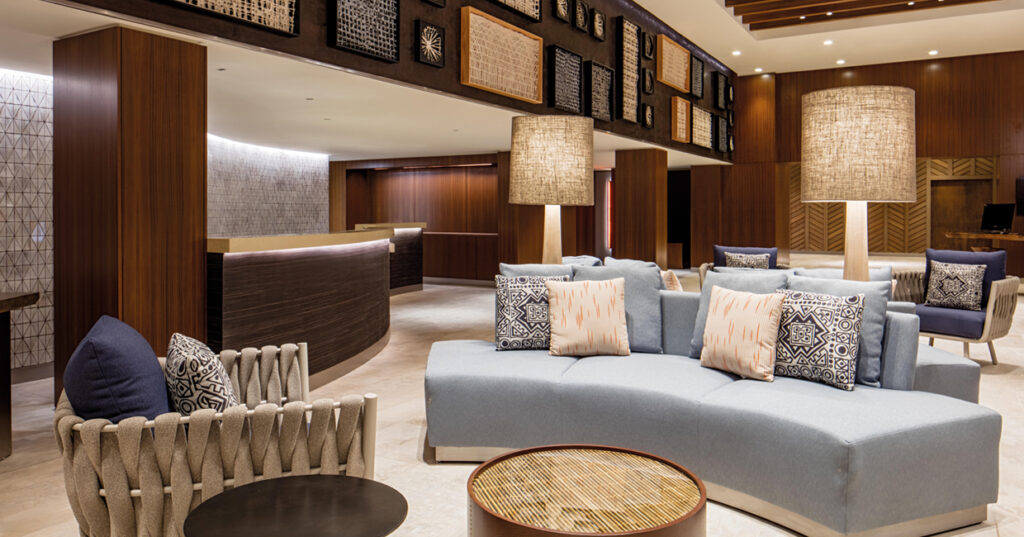Beatrice Girelli, co-founder and design director of acclaimed LA-based design studio, indidesign, has almost 20 years of experience in the commercial A&D sector, with a specialist focus on luxury hotel design. Here, Beatrice describes her approach to selecting artwork, and explores its wider function in relation to overall design scheme and brand identity.
Why do you feel that artwork is important to the guest experience?
Art has the ability to dictate the atmosphere of a hotel, and travellers today are expecting more out of hotel interiors. They are consistently looking for something comforting, but a space that is also inspiring and unique. This is in part because the hotel interiors that are intriguing are oftentimes the ones that guests return to time and time again.
How do you feel, if at all, that the use of artwork in hotels has changed in recent times?
Art is no longer a framed picture or image. Many elements of the design (counters, wall dividers, lighting elements and furnishings), as well as more utilitarian elements, may be transformed into an art piece.
The flooring can become an art statement as well as the ceiling treatment, an entry door or even signage or a menu board!
More hotel brands are now emphasising boutique aesthetics and using art to transform a space into a destination. This process started with independent hotels and quickly piqued the interest of larger brands, which immediately recognised the opportunity as well as the need to stay current.
Owners are realising the importance of making a statement in their public spaces, budgeting for more unconventional, bold artwork. Large hotel companies are also using artwork as a differentiating element between their own brands.
Do you feel that, where possible, local artists should be selected, or is it more important to set the right tone, regardless of source?
It is important to partner with locals artists and tap into local resources to make a space unique, but it’s just as important to make sure you partner with companies that understand the requirements of a hospitality project – hotels need pieces of artwork that will be able to stand unusual amounts of wear and tear and withstand maintenance, which is sometimes more tasking on products that the guest traffic!
We collaborate with local artists as much as possible on our projects but also pay tribute to the hotel’s surroundings and community in other ways. We research local culture, local lifestyle, and opportunities to introduce local elements into all of our designs, while keeping an eye on existing products in the local market to make sure we maintain a unique voice.
For example, at the Hilton Garden Inn Waikiki Beach, we let the island’s environment and culture inspire our artwork while carefully avoiding the tropes of ‘Hawaiiana’. We lined the upper walls of the lobby with framed weavings reminiscent of modern lauhala basketweave, but also paid homage to Chinese rice paper techniques and to the Japanese influence in Hawaiian culture.
In the guest rooms, we designed custom casegoods made of warm-tone walnut wood inset with a linen-like wallcovering that are meant to appear like koa wood, a tree that is endemic to the island and commonly used for surfboards as well as ukuleles.
Framed artwork pays homage to the lush nature of Honolulu as well and introduces vibrant saturated colours to the palette of the rooms that is fairly organic.
What would you say is the single most important consideration in selecting artwork for a hotel interior?
Every project is unique and differs depending on the budget and scale of the project. However, research is key to creating a narrative for your art programme. Once you’ve delved into the culture of the area – natural elements, history, architecture, fashion, people, local craft and culture, and so on – you can construct a story and use it to make thoughtful art selections throughout a hotel.
Sometimes this is a more literal approach but often it is a unique and personal interpretation, just depending on what is appropriate for the style and calibre of the project.



